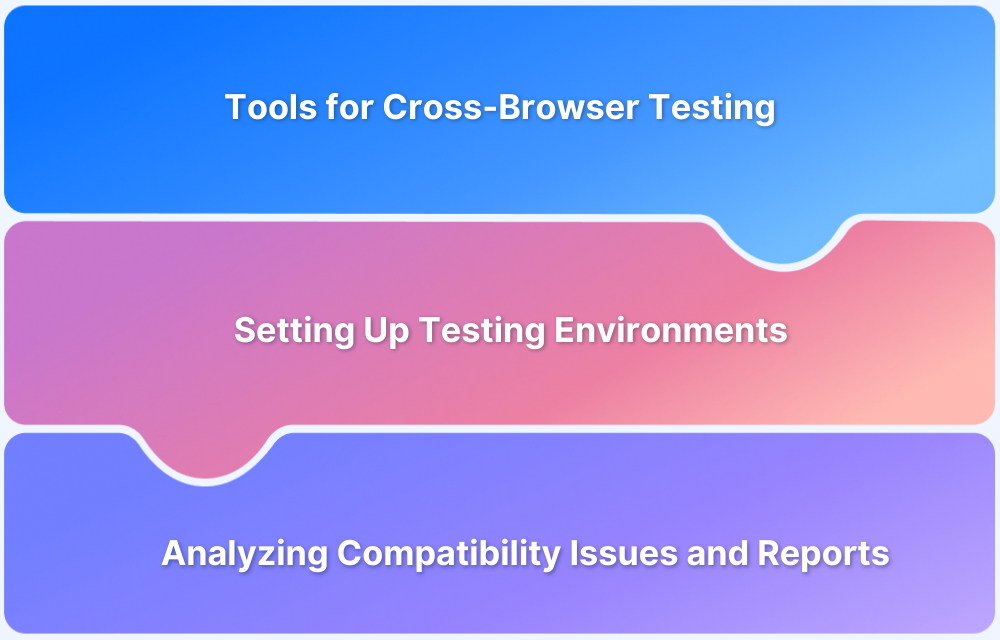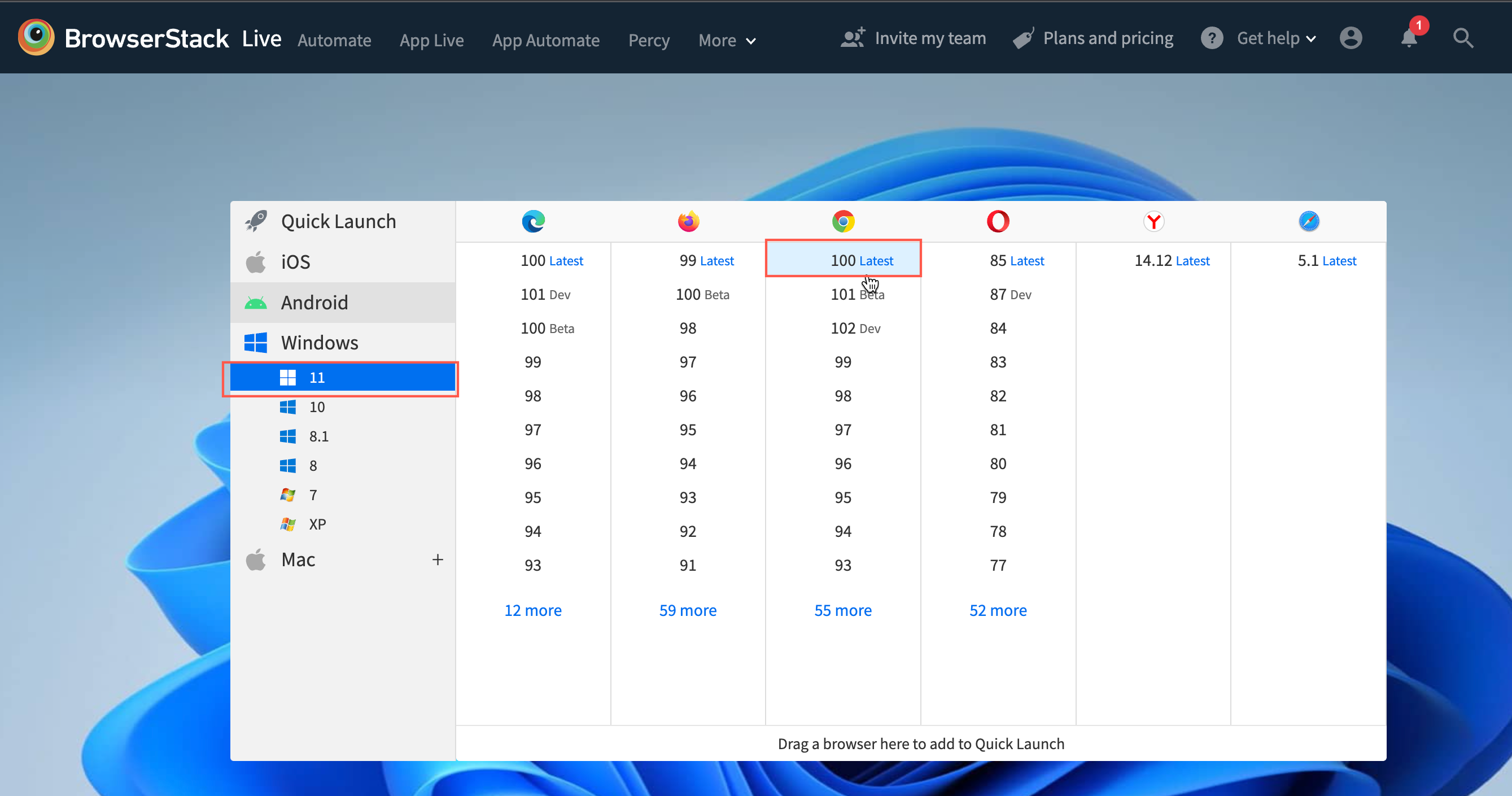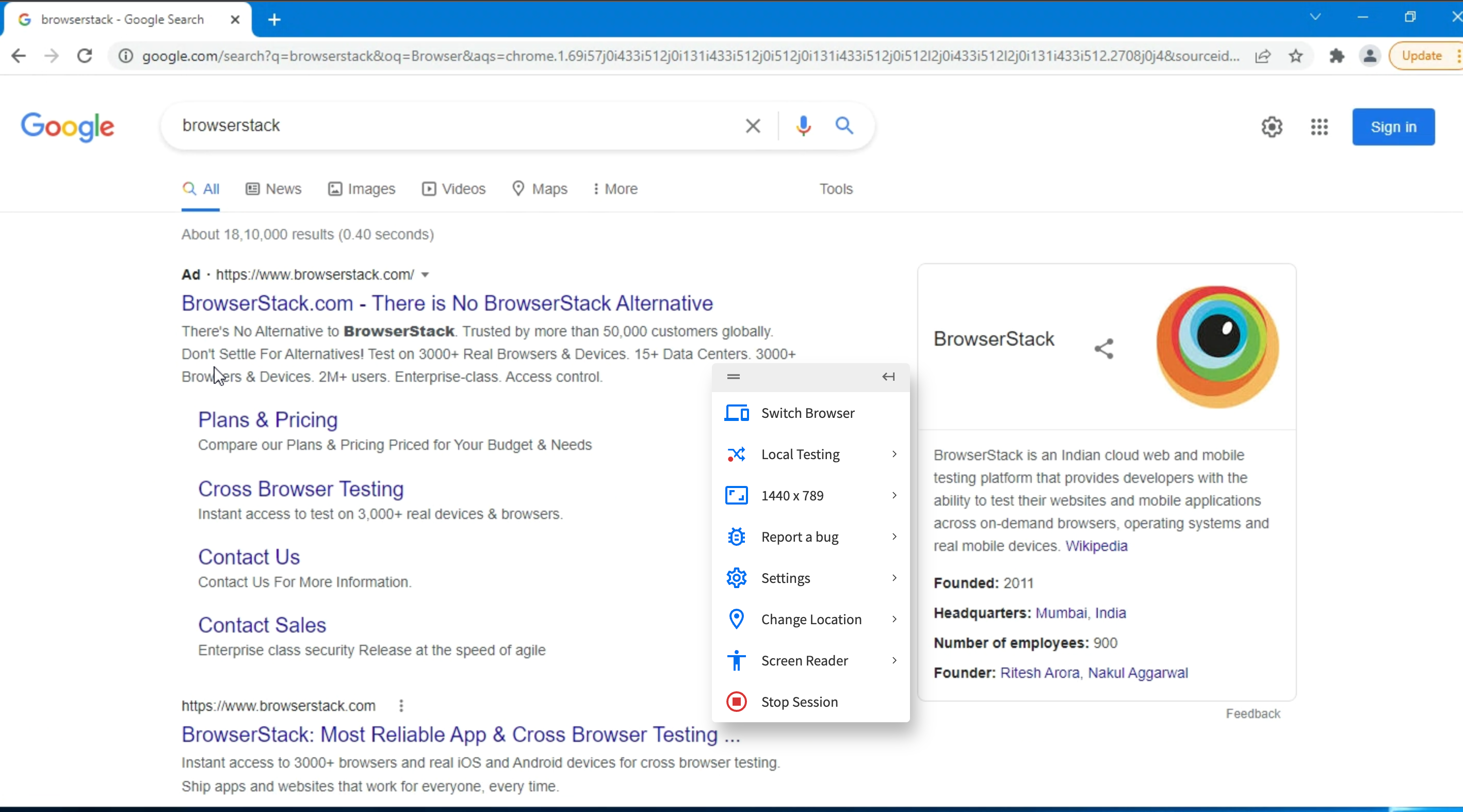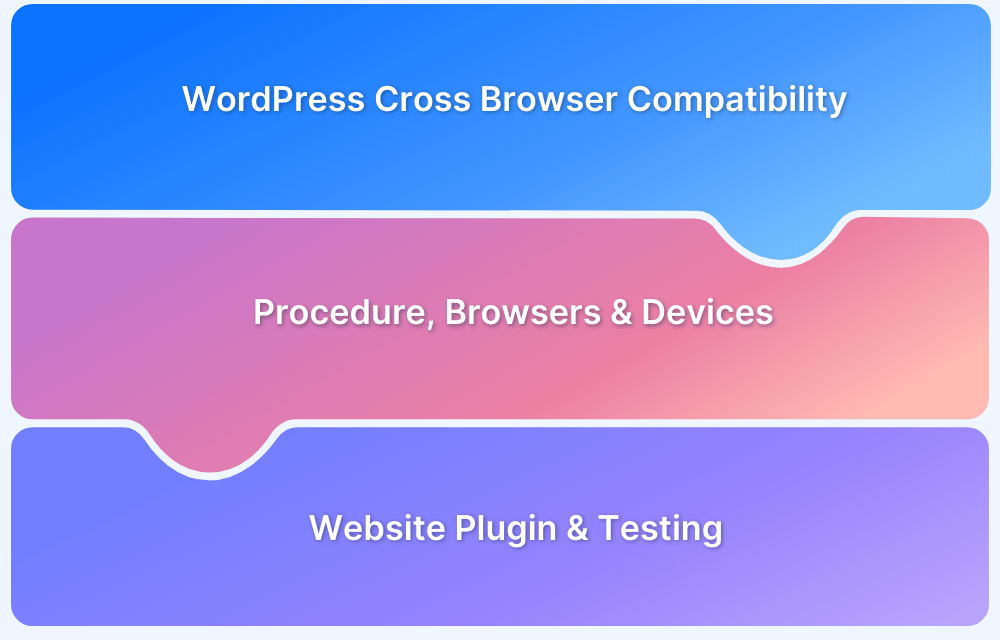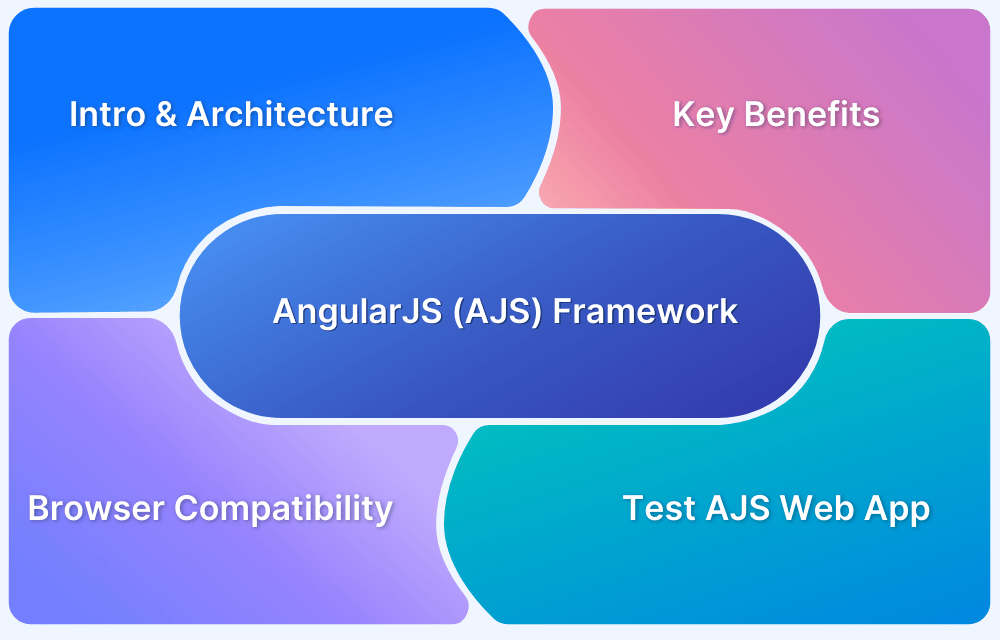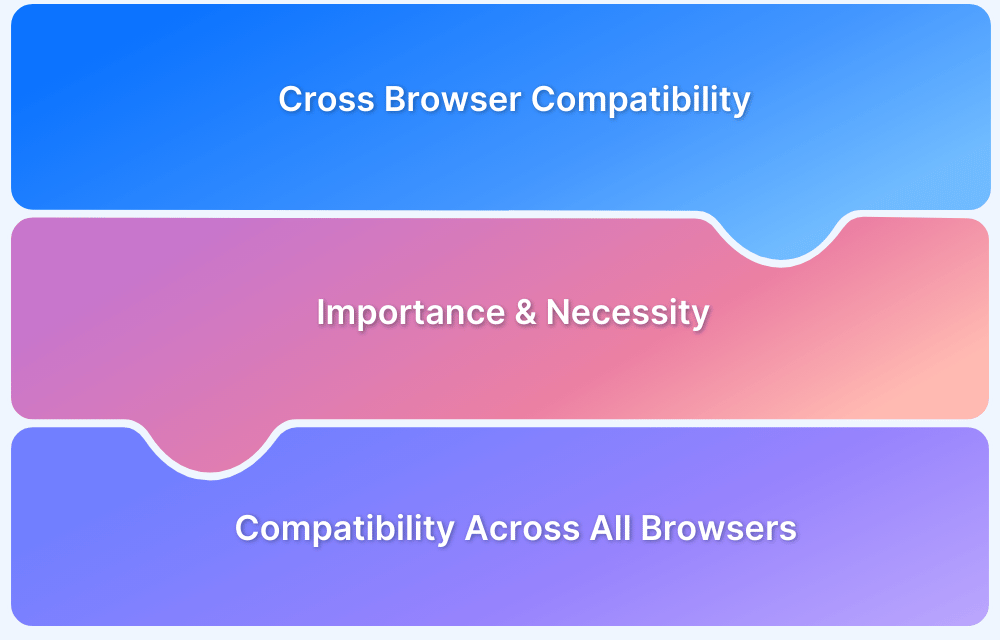Windows continues to dominate the desktop OS market, accounting for nearly 75% of global usage. For web developers, this makes it essential to ensure that applications run seamlessly across browsers on Windows devices. With multiple browsers like Chrome, Firefox, Edge, and their legacy versions in use, testing across these variations becomes a priority. However, setting up and maintaining in-house infrastructure for such diverse testing is costly and time-consuming. Cloud-based platforms offer a scalable alternative.
Overview
Why Windows Testing Matters
- Windows = 75%+ desktop OS market share.
- Users rely on Chrome, Firefox, Edge, Opera, Safari & older versions.
- Developers must test across browsers + versions for consistent UX.
Challenges that can be addressed by Browser Compatibility Tests on Windows
- OS-browser-version combinations = too many to cover manually.
- On-premise infra = expensive + complex to maintain.
- Need: scalable, real-environment testing without overhead.
How Browser Compatibility Works on Windows
- Sign up free on BrowserStack.
- Log in → Live Dashboard.
- Select OS-browser-version (e.g., Windows 11 + Chrome 100).
- Session launches instantly → enter website URL → start testing.
Key Features Available During Live Session
- Geolocation Testing → check website behavior across regions.
- Instant Bug Reporting → Jira, Trello, Slack, GitHub integration.
- Responsive Testing → validate layouts on screen sizes (1024×768, 1280×800, etc.).
- Local Testing → debug dev/staging builds before public hosting.
This guide explains how to run browser compatibility tests on real Windows environments using BrowserStack.
Running Browser Compatibility Tests on Real Windows 11 using Cloud Platform
An ideal and optimal way of running compatibility tests for browsers on Windows 11 or any version is to opt for a cloud-based platform that provides the necessary test infrastructure.
BrowserStack offers a diverse range of real browsers (IE, Edge, Chrome, Safari, etc including their latest and legacy versions.) and real Windows OS versions for this very purpose. For example, one can test on Internet Explorer(v 6-11) directly through their web browsers regardless of the operating system they use (Windows 10, Windows 11, etc).
The entire test infrastructure is cloud-based. This means one simply needs to:
- Sign up for free
- Log in
- Choose the desired OS-browser-version combination
- Start testing.
Note: BrowserStack doesn’t simulate any browser on Windows OS. All the browser tests are conducted on real browsers installed in real environments. To know more, read testing on Emulators vs Simulators vs Real Devices
Let’s consider a sample scenario wherein a QA runs a browser compatibility test on Windows 11-Chrome. QA simply needs to:
- Signup for free on BrowserStack Live.
- Navigate to the Live dashboard.
- Choose the desired combination (Windows 11 and Chrome v100 in this case). Refer to the image below for clarity.
- The moment you select the desired OS-browser combination, a new Live session is initiated in the browser window instantly.
- Now, simply enter the URL of the desired website and start testing on Windows 11 – Chrome
That’s how easily one can run browser compatibility tests on Windows 11 without any additional setup or configurations.
Run a Chrome Test on Windows 11 Now!
Additionally, teams also get access to multiple features available in the toolbar once a Live session begins:
- Geolocation testing to examine a website’s performance when accessed from a unique geographical location.
- Instant bug reporting (through Jira, Trello, Slack, Github) from the Live dashboard.
- Responsive testing for testing websites in distinct screen resolutions (like 1024×768, 1280×800, 1820×1024, and so on).
- Local Testing for testing and debugging work-in-progress web applications at scale without hosting them in public staging environments
As mentioned in the beginning, Windows OS dominates the desktop OS space. Naturally, software teams need to ensure that their web applications are compatible with the leading browsers (like Chrome) running on Windows OS.
Platforms like BrowserStack make it effortless for both QA and development teams to achieve this arduous task. Its comprehensive test infrastructure enables teams to run browser tests on Windows 11 and legacy versions of Windows effortlessly without any hassle.
Moreover, it empowers teams to test and optimize websites on real browsers rather than using an emulator for Windows OS. This guarantees accurate results every single time a QA plans to run browser tests for Windows 10 or 11.
